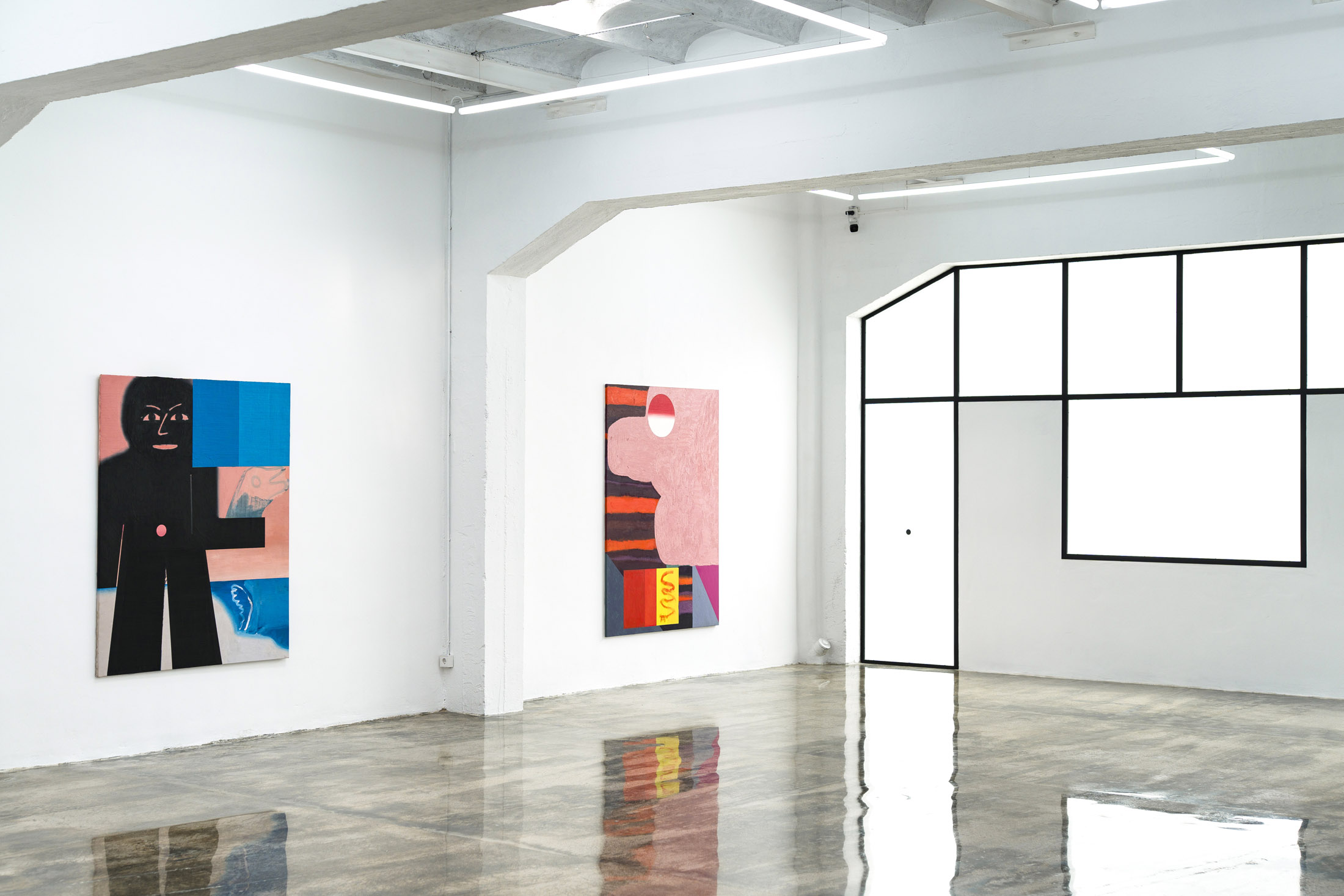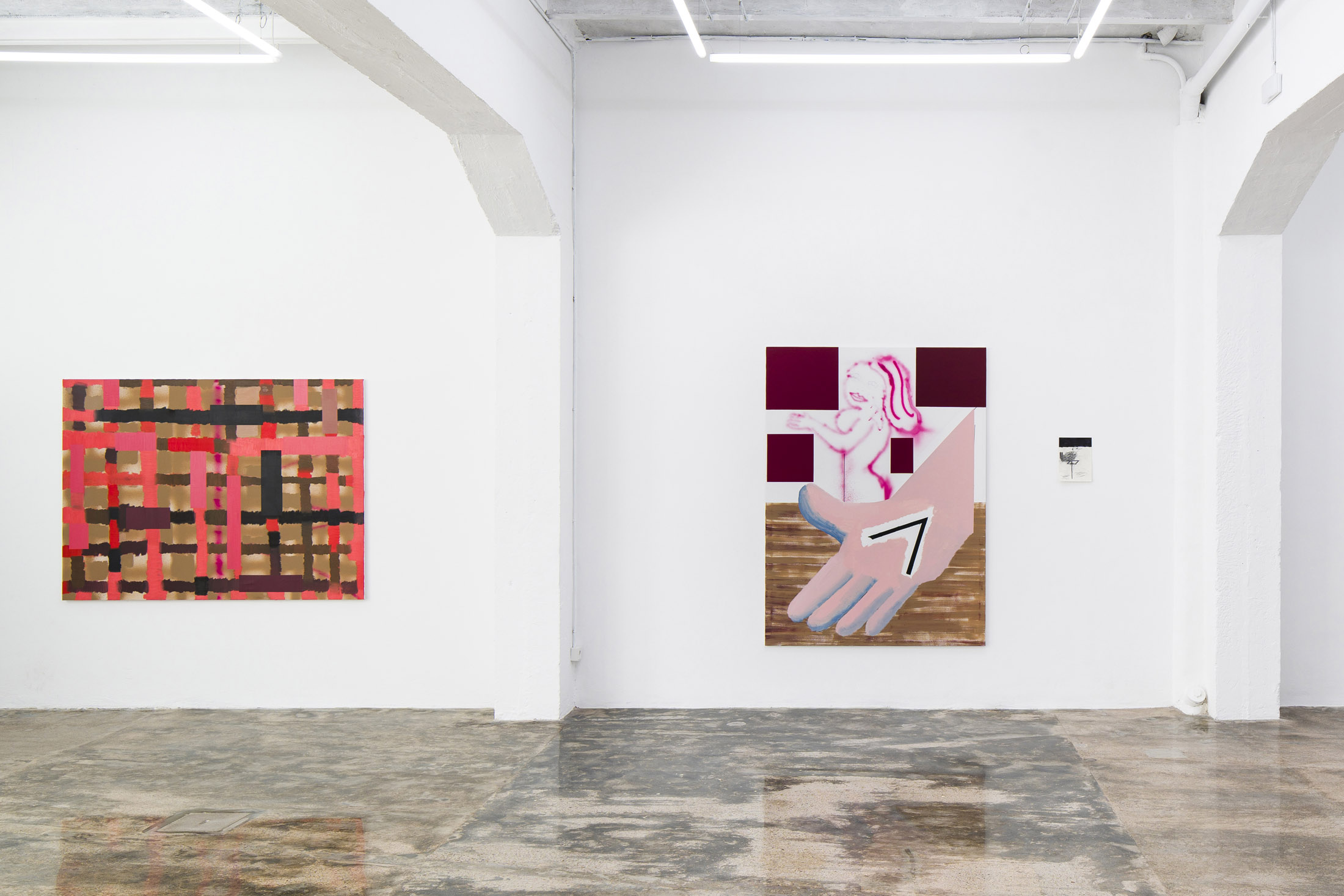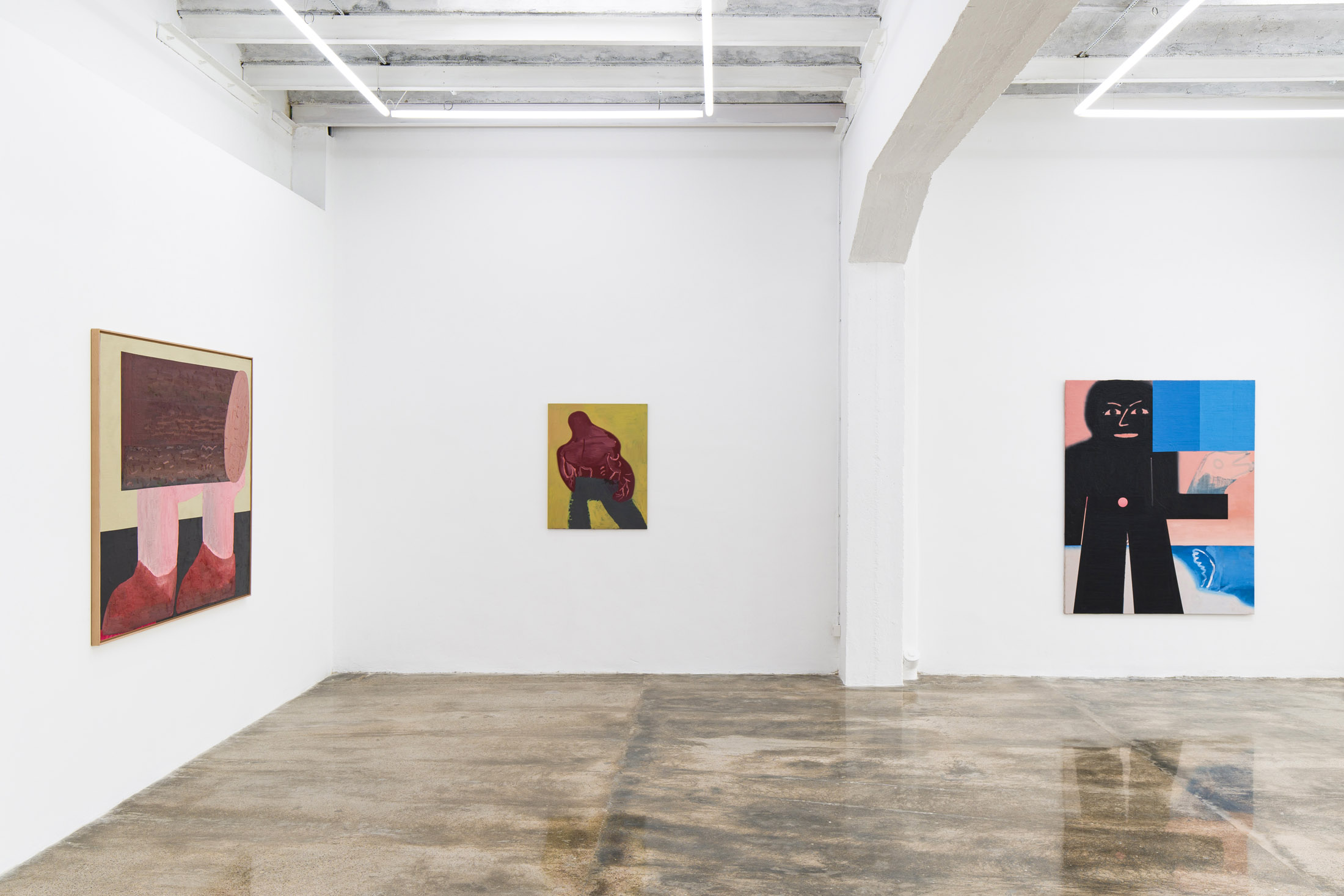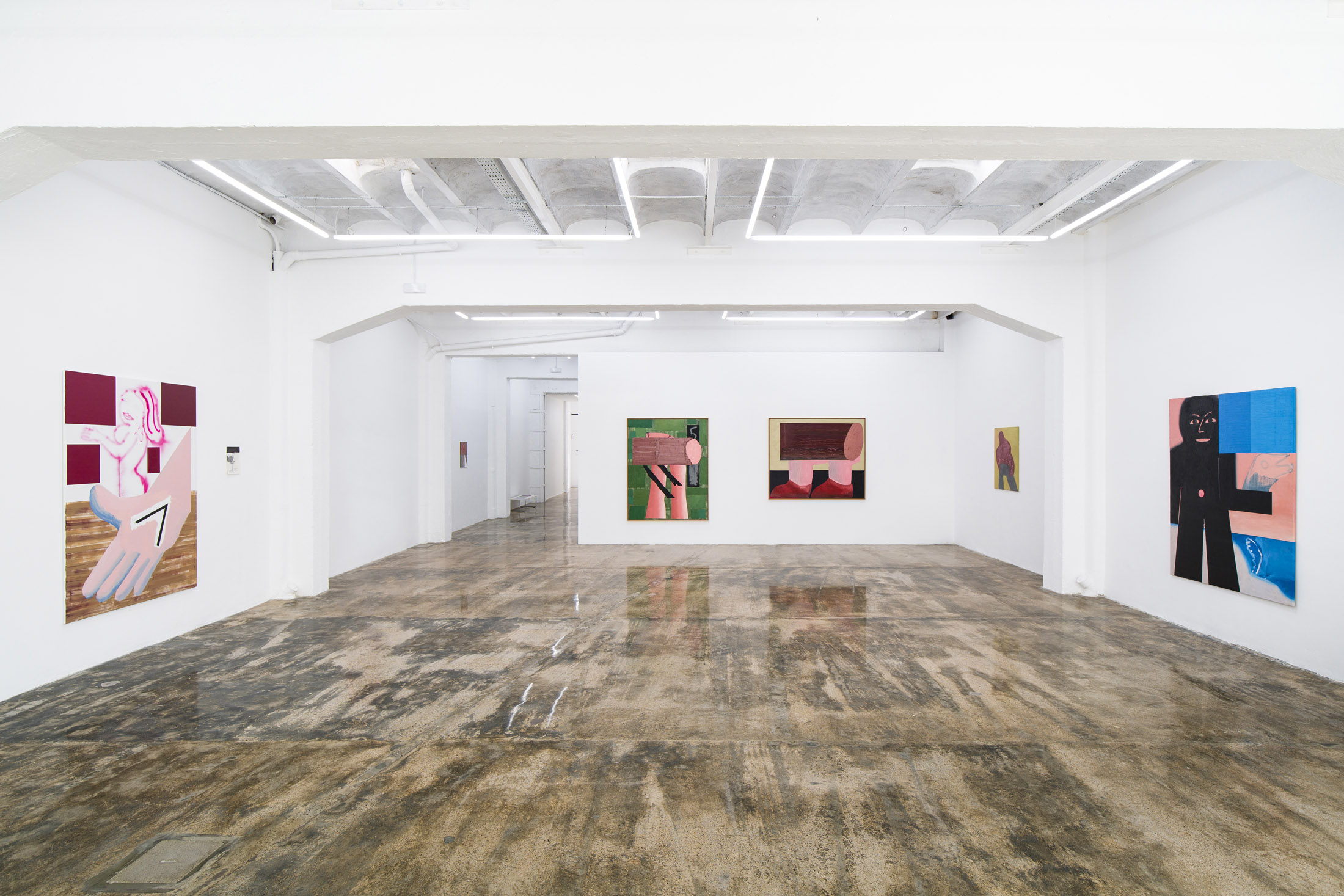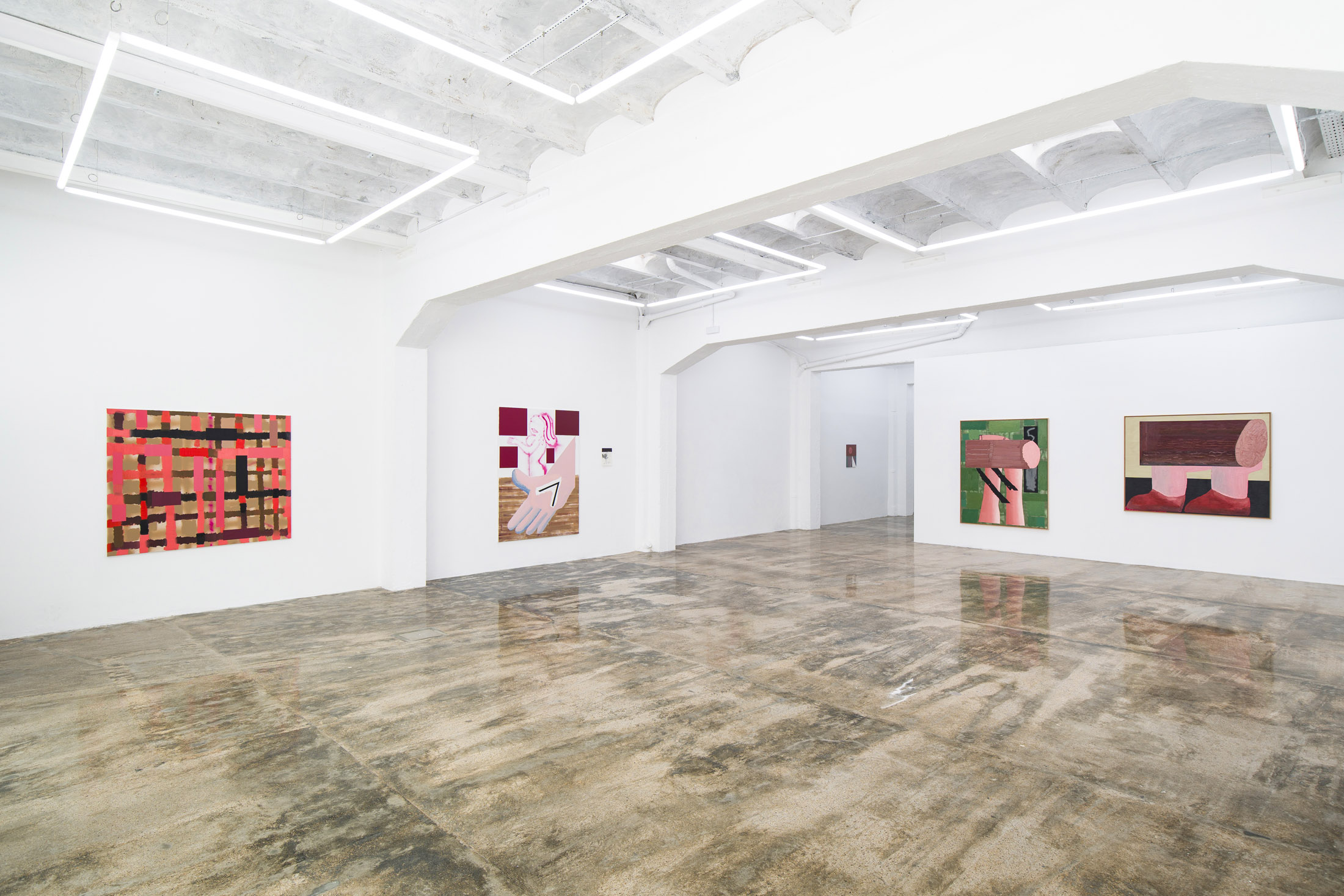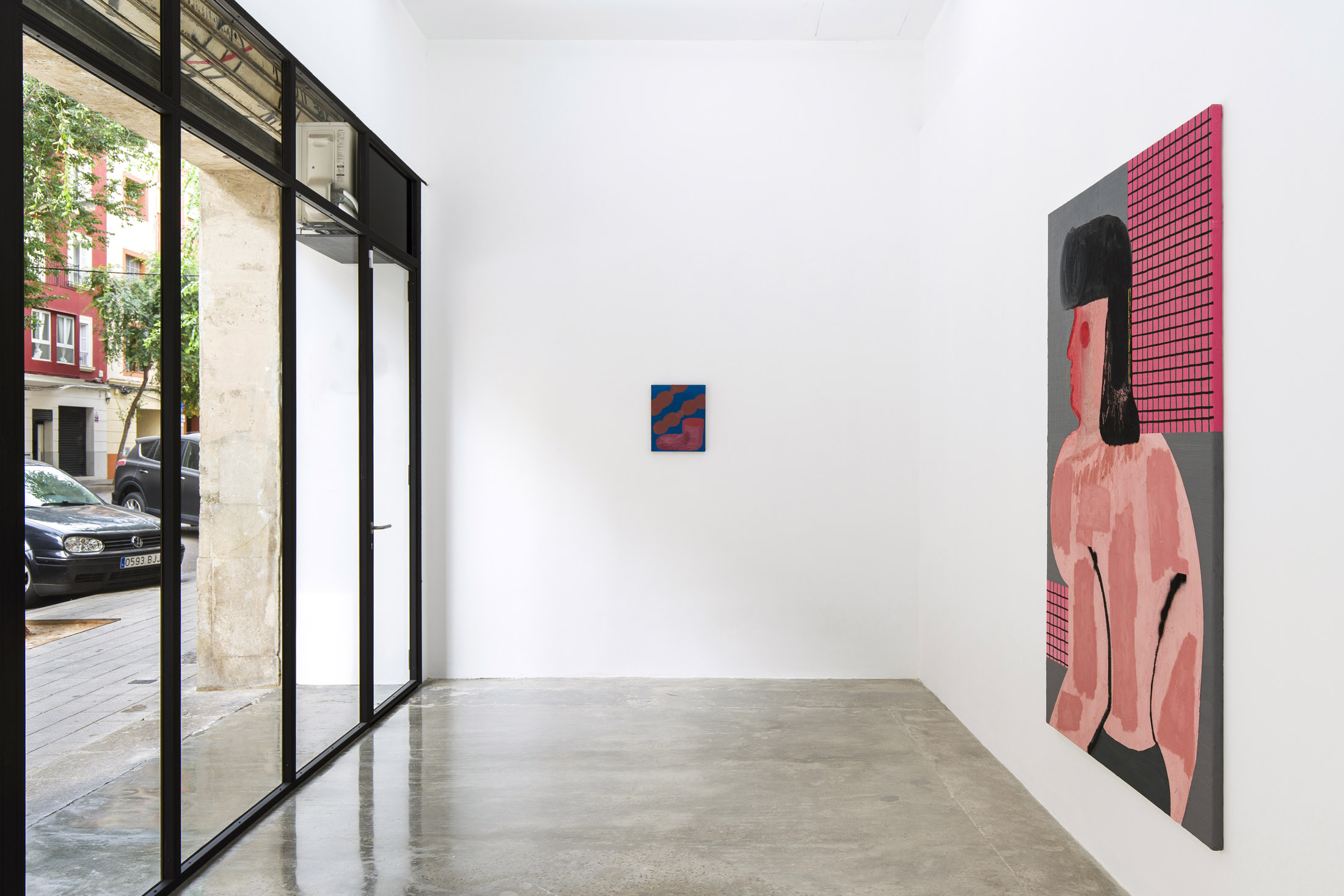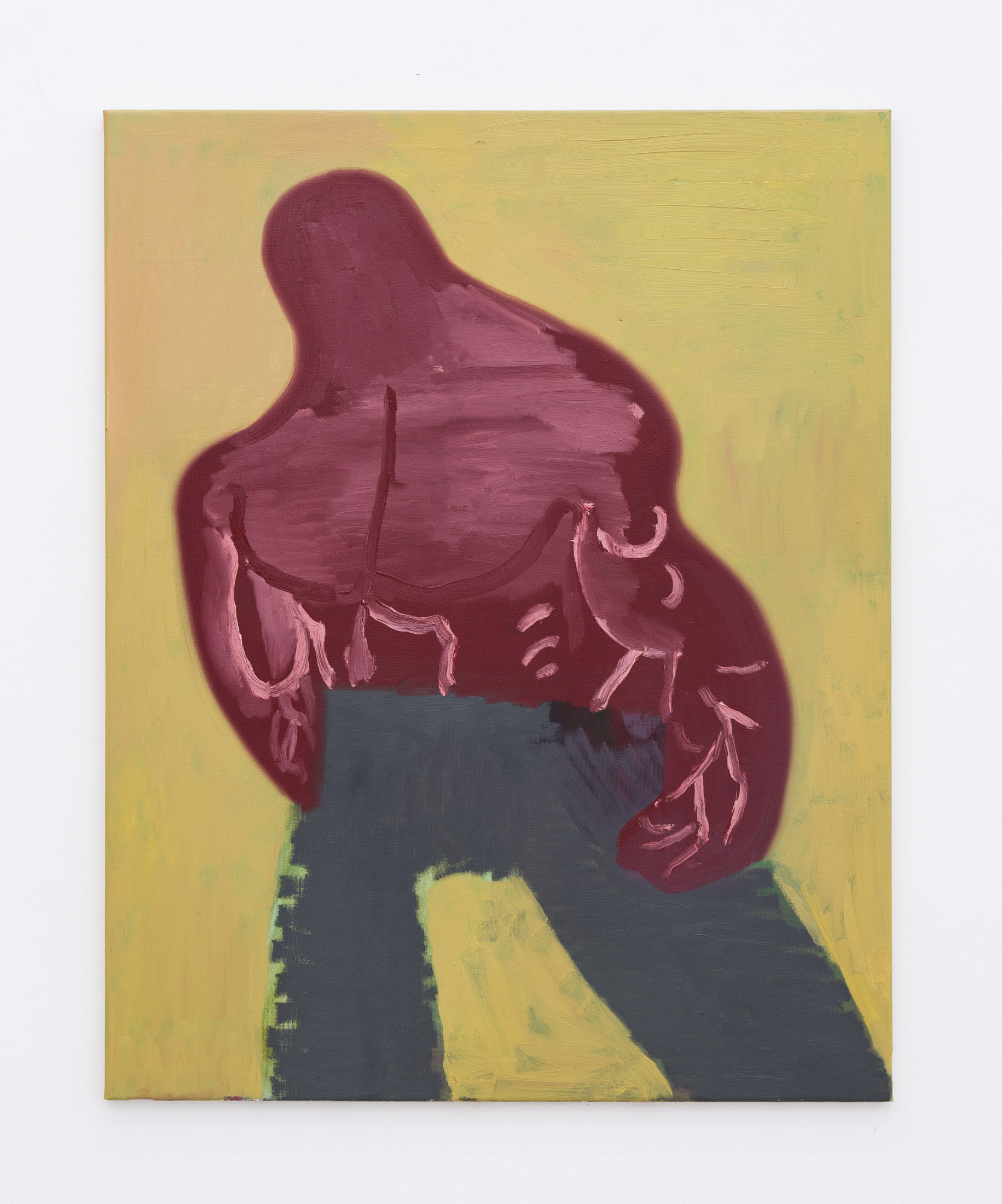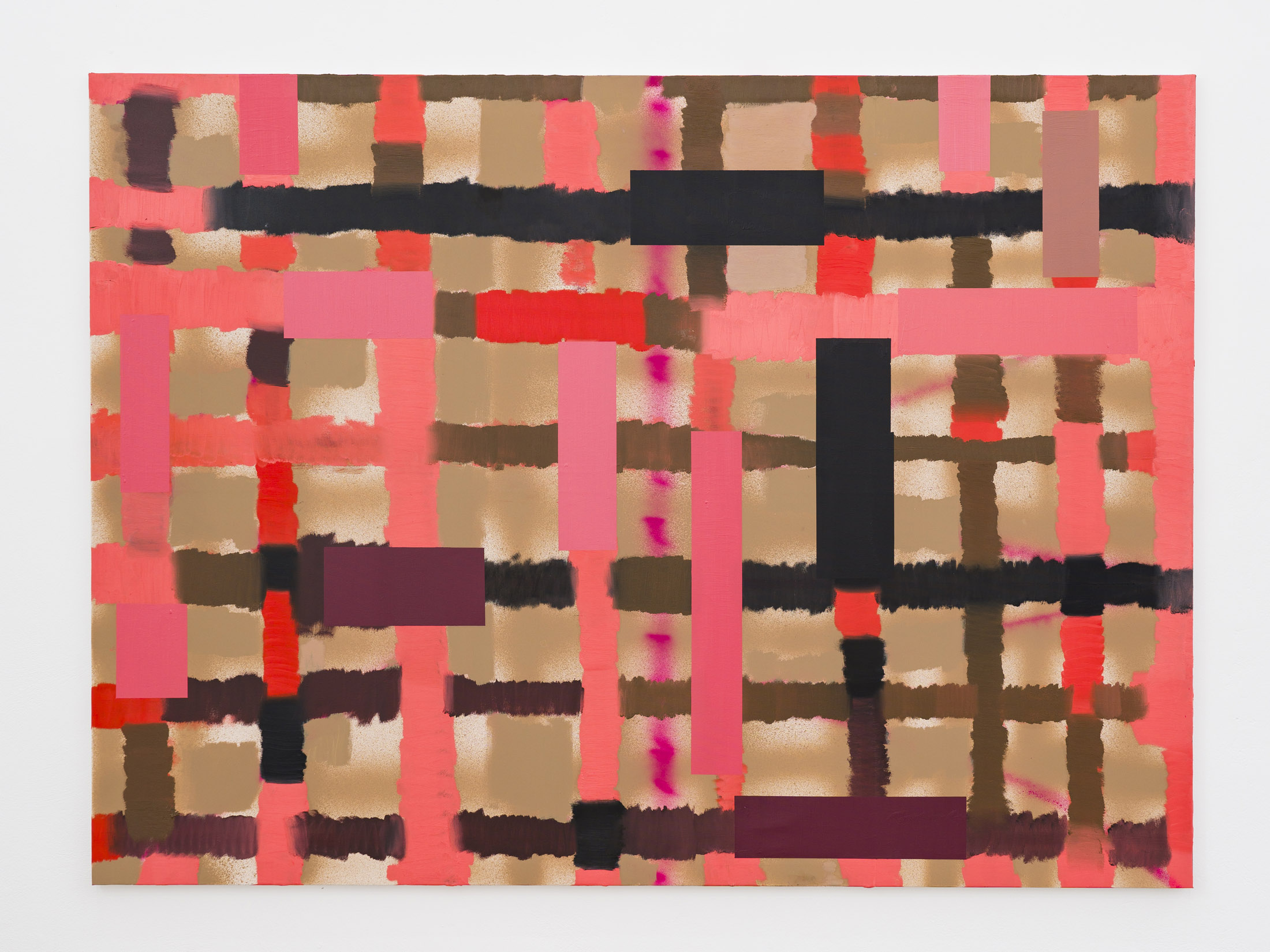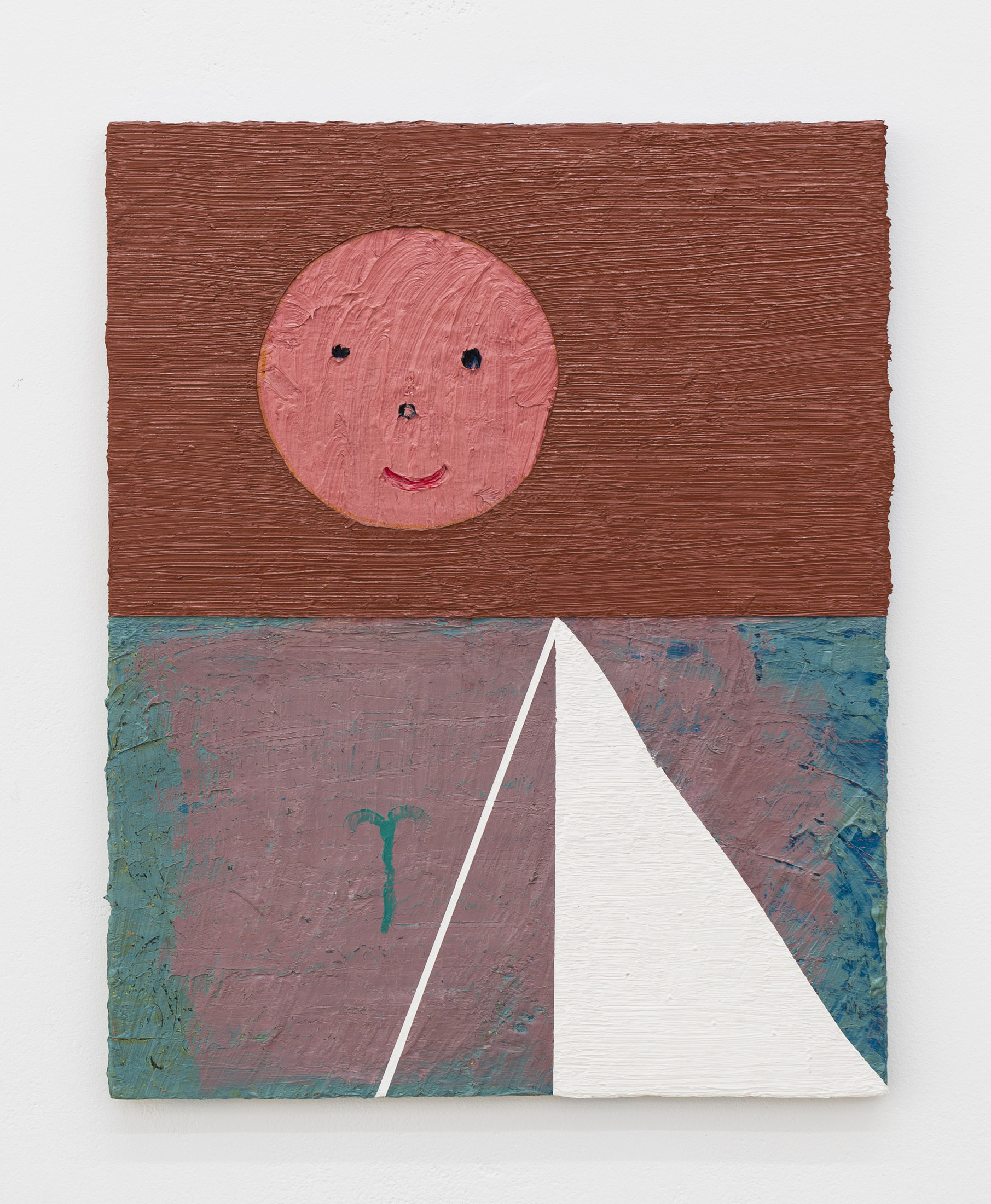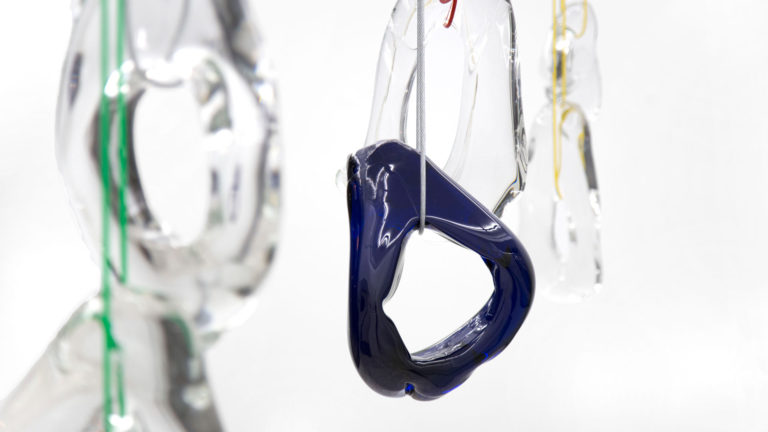Artist: Damaris Pan
Exhibition title: Male Male
Venue: Galería Fermay, Mallorca, Spain
Date: June 23 – September 15, 2023
Photography: ©Grimalt de Blanch / all images copyright and courtesy of the artist and Galería Fermay, Mallorca
Galería Fermay is pleased to present Male Male, a solo exhibition by Damaris Pan (Mallabia, 1983).
The title of the exhibition makes reference to Martin Kippenberger’s series ‘Lieber Maler, male Mir’ (1981) that translates into ‘Dear painter, paint for me’. In German male is the imperative and the first-person present-tense of the verb paint. In English it translates as masculine. In Spanish male shares the same root as bad, as in badly done, bad form or good bad. Male Male functions both as a semantic artefact as well as a recurring mantra that resonates in the artist’s mind when she is working at the studio; something like ‘’paint paint, I paint I paint, bad bad, male male”. It seems like there cannot be a better suited title for Damaris Pan’s solo exhibition whose body of work is precisely focused on the plastic possibilities of the medium and about questioning ideas related to the concept of representation. Convinced that in painting there hardly are any certainty, and indeed an infinite number conflicts in her particular relation to it, for Damaris Pan each accomplished artwork means a step forward in her understanding of the form and the pictorial medium.
The curator Robert Storr writes that the American artist Robert Ryman referred to himself as a realist —instead of imitating something that already exists, or that it depends on the conventions of painting, his work contains it own reality. This statement puts in the same orbit two artistic practices that although they might look like as totally opposites, both share the belief that the artwork should exist for itself without the aid of the outside world. That is to say, the intention of both artists is to untie painting from any form of dependence with reality although there may actually be correspondences. In this sense, while Ryman excluded all figurative motifs from his work, Damaris Pan frequently includes recognisable elements that instinctively take us to such referentiality or illusionism. It is in this tension where the conflict arises, the complexity and the conceptual demand by which Damaris Pan reclaims the autonomy of the medium —that one that allows her to generate reality.
The lack of a narrative exigency as well as a rigorous distinction between figuration and abstraction allow the artist to operate with great amount of freedom when it comes to the composition of images. Indeed, in the work of Damaris Pan formal qualities such as colour and form assume the weight of the pictorial plane. Her way of painting is agile and versatile, filled with technical resources that once and again take us back to the medium making unnecessary any form of interpretation in the traditional sense. The variety of brushstrokes she makes use of, the different textures that come from them, the thickness of the painting or the chromatic elaboration are the building blocks, the syntax, onto which she meticulously elaborates her work. From all of the above there comes an assertive and enigmatic artistic practice that makes a productive use of the problematics that appear while painting and situates the artist in the realm of experimentation interrogating thus the limits of the medium.
The painter Philip Guston formulated the following when referring to his own work: “you paint a shoe, you start from the sole and it turns into a moon; you start painting the moon and then it becomes a piece of bread”. Damaris Pan shares with Guston that kind of intentionality and playfulness which allows her to work in unison with the medium —the finalised work, then, is nothing else but the culmination of a long process where the image has literally been constructed by altering, adding and erasing it. This is precisely the reason why Damaris Pan’s artworks exude a very particular kind of density that mainly comes from those motifs buried underneath layers of painting. We perceive something rather tectonic in her work that comes from a continuous repositioning that ultimately makes her advance in her relation to painting. Irony and the absurd are also other qualities present in her work that somewhat lighten the initial impenetrability of her pieces. The power of her compositions, as well as a puzzling ambiguity, keep us in the present that is manifested through the materiality of painting.
Male Male includes oil works on canvas and paper in various formats in which we can see on the same surface geometric figures like colour patches alongside recognisable figures such as logs, legs, hands, quiffs or monsters. While Damaris Pan’s way of painting might initially seem rather flat, she does not renounce to generate the illusion of space through tridimensional effects that ultimately result in a diverse array of corporealities. The strength of her work resides in her rigour and non-conformism that makes her take risks when it comes to making decisions. Whether we focus on how she works the colour palette, or the inclusion of unexpected elements that tension the composition and the sense of the painting, we realise that she never takes the easy way out. This is why the work of Damaris Pan has the capacity to surprise us and opens the door to multiple forms of appreciation, making, above all, painting present.
Damaris Pan lives and works in Bilbao where she combines her artistic practice with a teaching position in the department of Painting at Fine Arts University of the Basque Country. Previous exhibitions include Un Martillo en la Cabeza, Ana Mas Projects, Barcelona 2022, Veri Pery, Half House, Barcelona, 2022. Damaris Pan has participated in artistic residencies such as Sichuan Fine Arts Institute in Chongqing, China (2019), Art OMI in New York (2018) and Kunsthochschule Weissensee, Berlin (2005) . She has recently received the Gure Artea prize (2021) and two Eremuak scholarships. Her work is part of national and international collections such as Artium Museoa, Fundación La Caixa, Banco Sabadell, Fundación BilbaoArte, Colección Modus Vivendi, E-Innova Lab Art Collection, Francis J. Greenburger, Time Equities, Inc., or The Art OMI Collection.



